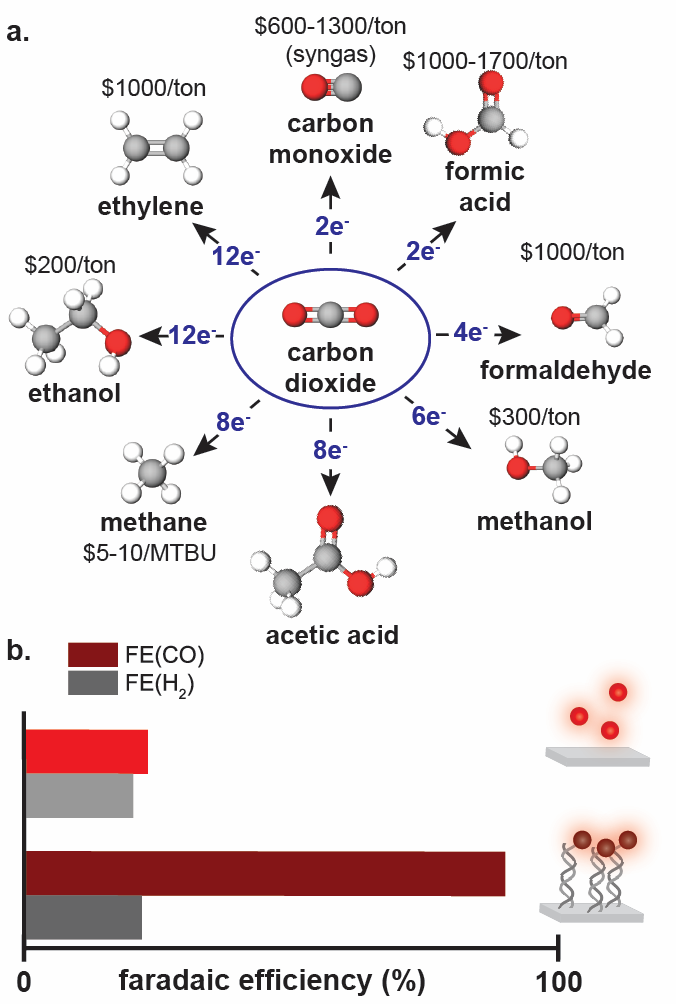Research Area 3: Sustainability: Bio-inspired catalysis towards a net zero carbon future
Despite major advances in clean energy technology, the energy sector continues to emit carbon dioxide (CO2); in fact, more than half of the electricity generated comes from burning fossil fuels. Thus, a major challenge in clean energy is the development of equitable technologies to provide access to clean energy tech. We take inspiration from biology to modify electrode surfaces with small-molecule catalysts to improve CO2 valorization.
Biomaterials for a circular carbon economy. In the next fifty years, 500 gigatons of CO2 are expected to be produced. Despite its abundance and climate impact, CO2 has yet to be widely used to generate value-added chemicals (Fig. 4a). Electrochemical CO2 reduction (CO2RR) can convert CO2 into value-added products, but the reaction efficiency remains low. We use DNA as “molecular Velcro” to immobilize electrocatalysts through hybridization-based surface attachment. This strategy improved reaction efficiency and catalyst stability at a lower overpotentials (Fig 4b).
Microbial electrochemical systems for water remediation. Organic waste streams are a reservoir of renewable energy, but this energy is difficult to harness, making technologies to convert waste into energy the next frontier. Systems that employ electroactive microbes (EAMs) are promising to oxidize organic waste and transfer the resulting electrons extracellularly to extracellular substrates such as electrodes. These technologies are limited by inefficient electron transfer to substrates. We find that the application of ion- and electron-conductive polymers containing imidazolium pendant groups that resemble protonated histidines result in five times the current generation from EAMs.

Figure 4. (a) CO2 can be converted into valuable products. (b) Using DNA as “Velcro” to tether catalysts to electrodes, we improve the Faradaic Efficiency for CO production.